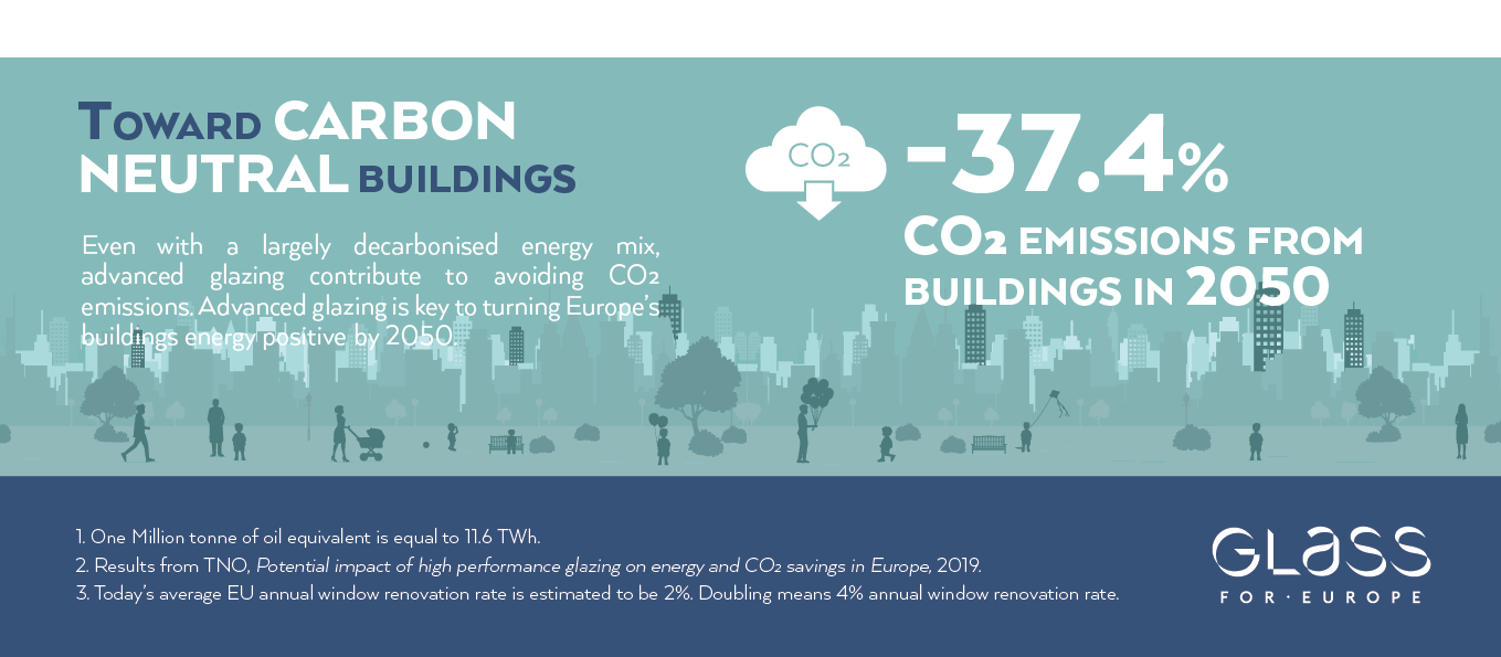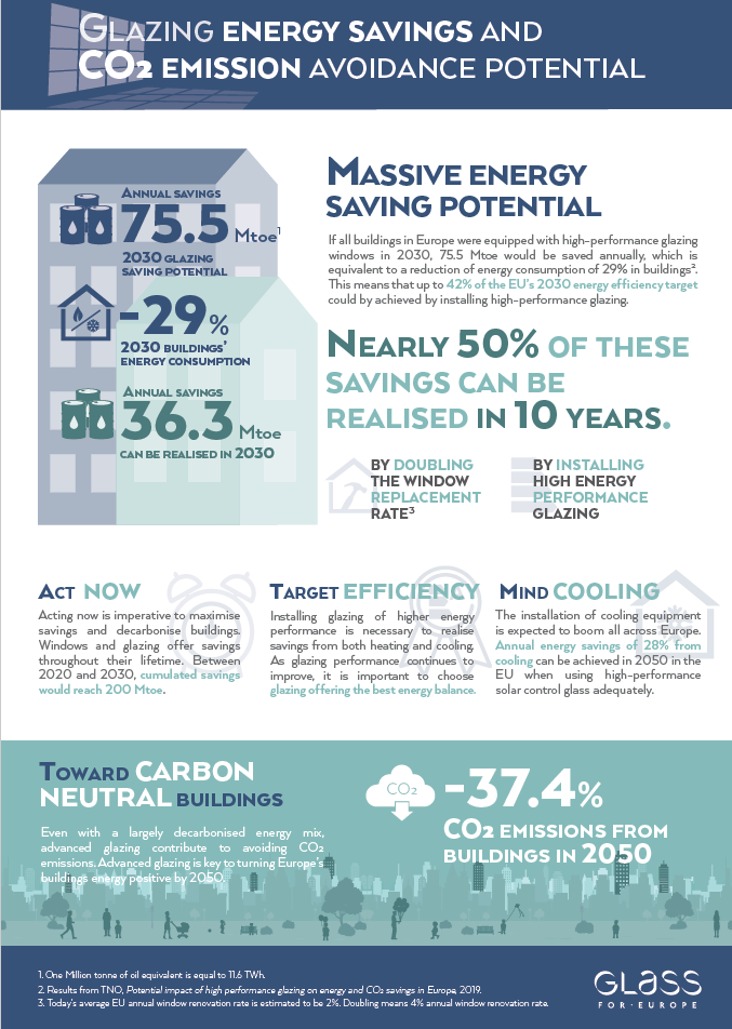
A study, published in May 2019, by the Dutch scientific institute TNO, commissioned by Glass for Europe, finds that nearly 30% of Europe’s building energy consumption for heating and cooling could be saved in 2030 if all Europe’s buildings were equipped with high-performance glazing. To Glass for Europe, it is striking to note that almost half of these savings could be realised in as little as 10 years should the renovation rate of windows be doubled, i.e. from 2% to 4% annually, and that newly installed windows be equipped with high-performance glazing.
The study by TNO is a quantification of both energy and CO2 savings that can be realised for heating and cooling of buildings thanks to high-performance glazing across the 28 EU Member States in both horizons 2030 and 2050. In addition to full potentials, whereby all windows are equipped with high-performance glazing across all EU buildings, it also simulates the impacts of several window replacement rates, all compared to a baseline scenario.
The study demonstrates once more the massive energy savings and induced CO2 emission reduction that is made possible thanks to high-performance glazing, which are readily available in Europe. Most interestingly, it highlights that these long-lasting savings could be realised rapidly if building and energy-efficiency policies across Europe were effective at supporting a doubling of the building renovation rate and the uptake of high-performance glass products.
When Member States are busy looking for effective climate mitigation measures and designing long-term plans for the renovation of buildings, it arises from this study that Member States can already go a long way with actionable and targeted policy measures on glazing. Support mechanisms to window retrofitting, reviewed performance requirements and incentives to adopt high-performance glazing will make a big difference. The sooner the better!”
For more information on the study, please visit the Glass for Europe website:
Study: TNO, Potential impact of high-performance glazing on energy and CO2 savings in Europe, 2019.
Bertrand Cazes
Secretary General of Glass for Europe

https://glassforeurope.com/wp-content/uploads/2019/05/Glazing_potential_infographic_2019.pdf
Sign up for Glastory newsletter
We answer your questions about glass processing. Let us know your challenges and we promise to do our best to help you.
Comments are closed.